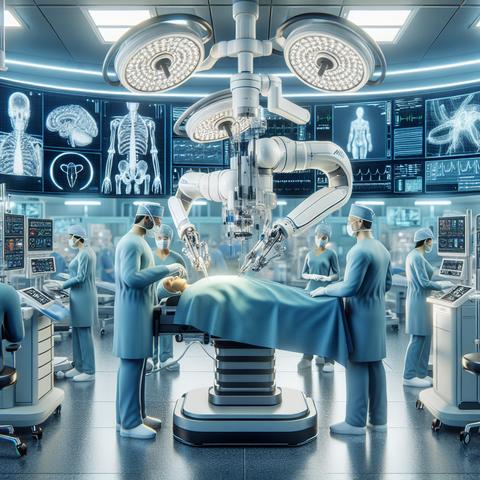Robotic versus laparoscopic surgery for middle and low rectal cancer
Feng Q et al, JAMA. 2025 Jul 8;334(2):136-148
Robotic surgery resulted in significantly lower 3-year locoregional recurrence rate and better functional outcomes in patients with middle or low rectal cancer compared to conventional laparoscopic surgery in a multicenter randomized controlled trial (REAL) from China involving 1240 patients.
Importance: Robotic surgery for rectal cancer is widely used, but data on long-term oncological outcomes are still lacking. Objective: To compare the 3-year locoregional recurrence rates of middle and low rectal cancer in patients who underwent robotic surgery versus conventional laparoscopic surgery. Design, setting, and participants: In this multicenter, superiority, randomized clinical trial, patients with middle or low rectal adenocarcinoma (cT1–T3, N0–N1, or ycT1–T3 Nx) and no distant metastasis were enrolled at 11 centers across 8 provinces in China from July 2016 to December 2020. Among the 1742 consecutive patients assessed for eligibility, 1240 were eligible and randomized. Follow-up continued until December 31, 2023. Interventions: Patients were randomized 1:1 to undergo robotic or conventional laparoscopic rectal cancer resection. Main outcomes and measures: The primary outcome was the 3-year locoregional recurrence rate. The primary analysis was performed as randomized, but excluded patients deemed ineligible after randomization. The secondary outcomes included disease-free survival; overall survival; and urinary, sexual, and defecation function. Results: Of the 1240 patients enrolled, 1171 were included in the primary analysis (586 in the robotic surgery group; mean age, 59.1 [standard deviation {SD}, 11.0] years; and 356 were men [60.8%] vs. 585 in the laparoscopic surgery group; mean age, 60.7 [SD, 9.8] years; and 354 were men [60.5%]). The median follow-up time was 43.0 months (interquartile range, 36.7–60.0 months). The 3-year locoregional recurrence rate was 1.6% (95% confidence interval [CI]: 0.6–2.6%) in the robotic group vs 4.0% (95% CI: 2.4–5.6%) in the laparoscopic group (hazard ratio [HR] = 0.45 [95% CI: 0.22–0.92], log-rank p = 0.03; adjusted HR = 0.39 [95% CI, 0.19–0.80]). The 3-year disease-free survival rate was higher in the robotic group (87.2%) vs the laparoscopic group (83.4%) (HR, 0.74 [95% CI, 0.56–0.98], log-rank p = 0.04; adjusted HR = 0.67 [95% CI: 0.50–0.89]). No significant between-group difference was observed in 3-year overall survival (94.7% in the robotic group vs. 93.0% in the laparoscopic group). Patients in the robotic group also had better urinary function, male and female sexual function, and defecation function at 3 and 6 months after surgery and better urinary function and male sexual function at 12 months after surgery.

Conclusions and relevance: Compared with conventional laparoscopic surgery, robotic surgery significantly improved long-term oncological outcomes in patients with middle or low rectal cancer. With additional real-world clinical data and modern, improved training programs for surgeons, robotic surgery could be the preferred choice for patients with middle or low rectal cancer.